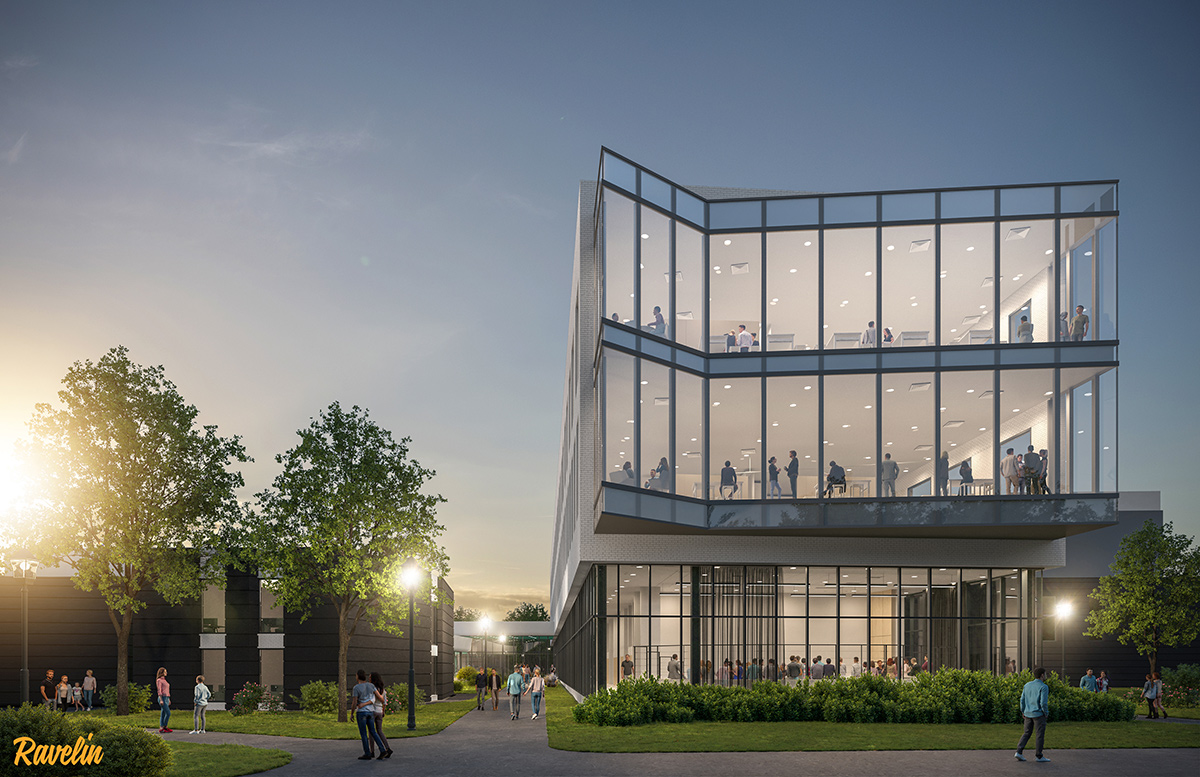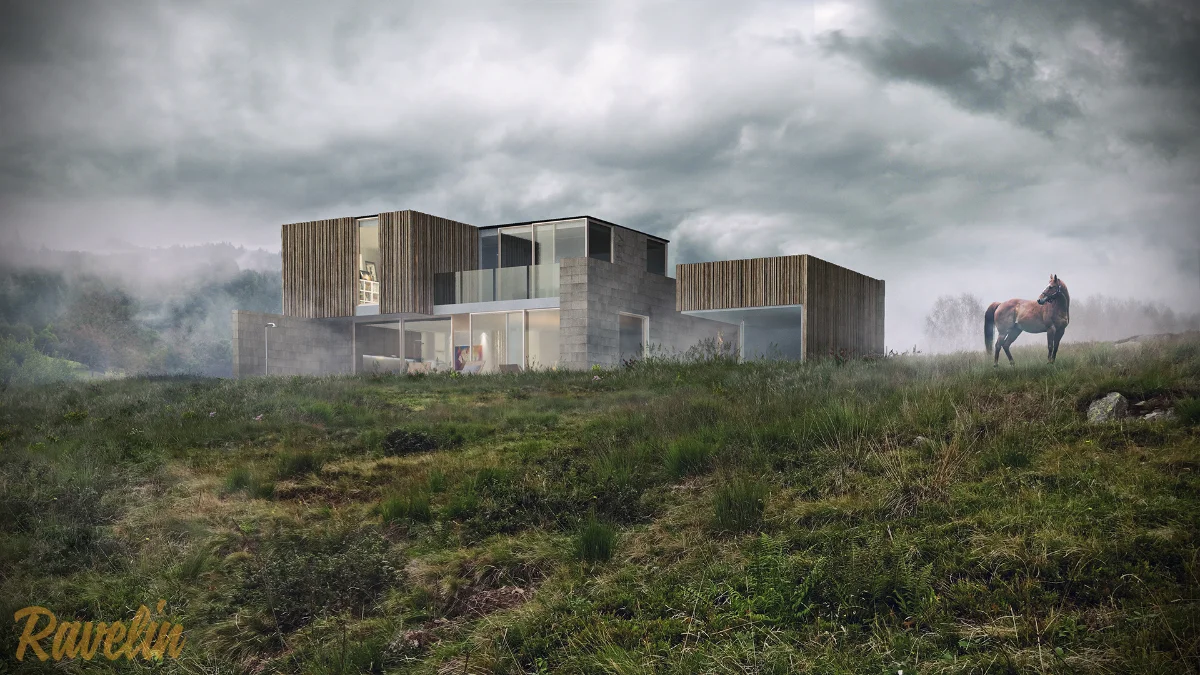Using 3D Visualization in Marketing and Sales: A Complete Guide
Hey there! Imagine trying to sell a million-dollar property with nothing but a floor plan and a few sketches. Sounds like a tough sell, right? Now, picture a photorealistic 3D rendering where potential buyers can step into the home, admire the sunlight streaming through the windows, and visualize themselves sipping coffee on the balcony. That’s the power of 3D visualization—it transforms "maybe" into "where do I sign?"
What Is 3D Visualization and How Does It Work?
Before we get into the magic it creates, let's break down what 3D rendering actually is.
Definition and Principles of 3D Visualization
In simple terms, 3D visualization is the process of creating lifelike digital images of spaces that don’t yet exist—or at least not in the way you want to present them. Think of it as photography, but instead of a camera, artists use cutting-edge software to sculpt, texture, and light up a scene.
Key Technologies Used in 3D Rendering
Creating jaw-dropping 3D visuals isn’t just about skill—it’s about the tech behind it. High-end rendering engines like V-Ray, Corona Renderer, and Unreal Engine bring raw 3D models to life, simulating how light interacts with surfaces, bouncing off glass, absorbing into wood, and reflecting on polished marble.
These tools allow for mind-blowing realism, making a luxury penthouse feel like it’s right in front of you, even if it only exists on a computer screen. Ever seen an architectural visualization so detailed you could almost feel the texture of the couch? That’s no accident—it’s the result of advanced ray tracing, global illumination, and physically accurate materials.
Differences Between 3D Visualization and Traditional Product Presentation Methods
Let’s be honest—static blueprints and 2D sketches just don’t cut it anymore. Buyers today want to see the property, not just imagine it. That’s where 3D rendering takes the lead over traditional real estate marketing.
- Photoshoots? Expensive and limiting. You need perfect weather, staged furniture, and a completed project. With 3D visualization, you can showcase a property before a single brick is laid.
- Physical models? Bulky and outdated. They might look great in an office, but they can’t be emailed to a client overseas. A 3D rendering, on the other hand, is accessible anytime, anywhere.
- Sketches and blueprints? Too abstract. Most buyers aren’t architects—they struggle to interpret technical drawings. But show them a fully rendered interior with warm lighting and elegant finishes? Now, they get it.
With 3D rendering, your buyers don't need imagination—they just need a screen.

Benefits of 3D Visualization for Business
Now that we know how 3D visualization works, let’s talk about why it’s a game-changer for real estate sales. Spoiler alert: it’s not just about making things look pretty—it’s about selling faster, smarter, and with fewer roadblocks.
Enhancing Visual Perception of Products
First impressions matter, and in real estate, they’re everything. A 3D rendering doesn’t just show a property—it tells a story. It invites buyers into a space, letting them picture their future home down to the smallest details:
- The golden glow of a sunset hitting the balcony.
- The soft texture of a velvet armchair in the living room.
- The perfect kitchen island where morning coffee becomes a ritual.
With hyper-realistic lighting, materials, and perspectives, 3D rendering makes properties feel tangible, even before they’re built. It’s the difference between saying, "Imagine a spacious living room," and actually showing one bathed in natural light.

Reducing Costs for Photoshoots and Prototype Production
Let’s talk numbers. Traditional real estate marketing often involves costly photoshoots, staging expenses, and even physical model construction. But what if you could cut those costs without sacrificing quality?
With 3D rendering:
- No need for physical staging. You don’t have to rent furniture, hire decorators, or wait for perfect weather conditions. A 3D artist can digitally stage a home in multiple styles, from modern minimalism to cozy rustic charm.
- No travel expenses for photographers. Need to market a luxury property in Dubai while sitting in New York? No problem. A high-quality 3D rendering lets you showcase the property remotely.
- No delays waiting for construction completion. Sell off-plan properties before the first foundation is poured. You can create a move-in ready look months before the actual build.
Long story short—3D rendering isn’t just about visuals. It’s a financial lifesaver.
Increasing Conversion Rates and Customer Engagement
Think about the last time something really caught your eye online. Was it a plain text description or a stunning, high-definition image? Exactly.
3D renderings don’t just look good—they work.
- Higher engagement. Listings with high-quality visuals keep buyers scrolling longer and clicking deeper. The more time they spend, the closer they get to saying, “I want this.”
- Faster decision-making. Instead of waiting for in-person visits, buyers can explore properties virtually and commit sooner. A detailed 3D rendering answers their biggest questions before they even ask.
- Emotional connection. People don’t buy houses—they buy dreams. A well-lit, perfectly staged 3D interior makes them feel something. And emotion? That’s what seals the deal.
Flexibility in Design Modifications Without Additional Costs
Imagine this: You’ve just spent thousands on a real estate photoshoot, but then—boom—the developer decides to change the flooring. Now, you need new photos, more time, and more money. Annoying, right?
With 3D rendering, last-minute design changes are no big deal.
- Need to switch from hardwood to marble flooring? A few clicks, and it’s done.
- Want to see how the living room looks with different furniture? No problem—modern, classic, or even industrial style, all within seconds.
- Thinking of testing different lighting setups? Daytime, evening, or a cozy candle-lit ambiance—it’s all possible with a 3D render.
This level of flexibility makes 3D visualization a game-changer for architects, developers, and real estate marketers. Instead of costly revisions, you get instant updates.

Applications of 3D Visualization in Various Industries
3D rendering isn’t just for fancy real estate listings—it’s revolutionizing multiple industries. Whether you’re selling homes, designing skyscrapers, or launching a new furniture line, high-quality visualization makes all the difference.
Let’s explore how different sectors are using 3D rendering to captivate audiences and close deals.
3D Visualization for Real Estate and Architecture
Real estate is where 3D visualization truly shines. Forget lifeless blueprints—buyers and investors want experiences, and 3D rendering delivers exactly that.
Presentation of Construction Projects
Selling a property before it’s built? That used to be a tough sell. But with 3D visualization, you can show a fully realized space before a single brick is laid.
- Developers use 3D renderings to secure funding by showing investors exactly what they’re buying into.
- Buyers get a clear vision of their future home instead of staring at technical drawings.
- Architects can refine their designs early, spotting potential issues before construction begins.
This isn’t just marketing—it’s a tool that accelerates the entire development process.

Virtual Tours of Properties
Why describe a space when you can let buyers walk through it? Virtual tours powered by 3D rendering turn static listings into interactive experiences.
- 360-degree walkthroughs allow clients to explore every inch of a property, from the master bedroom to the rooftop terrace.
- VR experiences bring real estate showings to a whole new level—buyers can step inside a home from anywhere in the world.
- Augmented reality (AR) lets clients place furniture, change wall colors, or even customize floor plans on the spot.
For international buyers or investors who can’t visit in person, virtual tours can be the deciding factor between interest and investment.
Improving Marketing Materials for Developers
Developers need stunning visuals to stand out in a competitive market. 3D rendering helps create:
- Eye-catching brochures and sales presentations
- Engaging website visuals that keep visitors clicking
- Social media ads that actually stop the scroll
With ultra-realistic images and animations, potential buyers and investors see the value long before construction is complete.

Conclusion
Key Takeaways on the Benefits and Applications of 3D Visualization
3D rendering isn’t just a marketing tool—it’s a sales powerhouse. It enhances engagement, reduces costs, and speeds up decision-making in real estate and beyond.
How to Start Using 3D Visualization for Your Business?
Looking to elevate your property sales? High-quality 3D renderings can make all the difference. Partner with a professional 3D studio and start selling smarter today.




